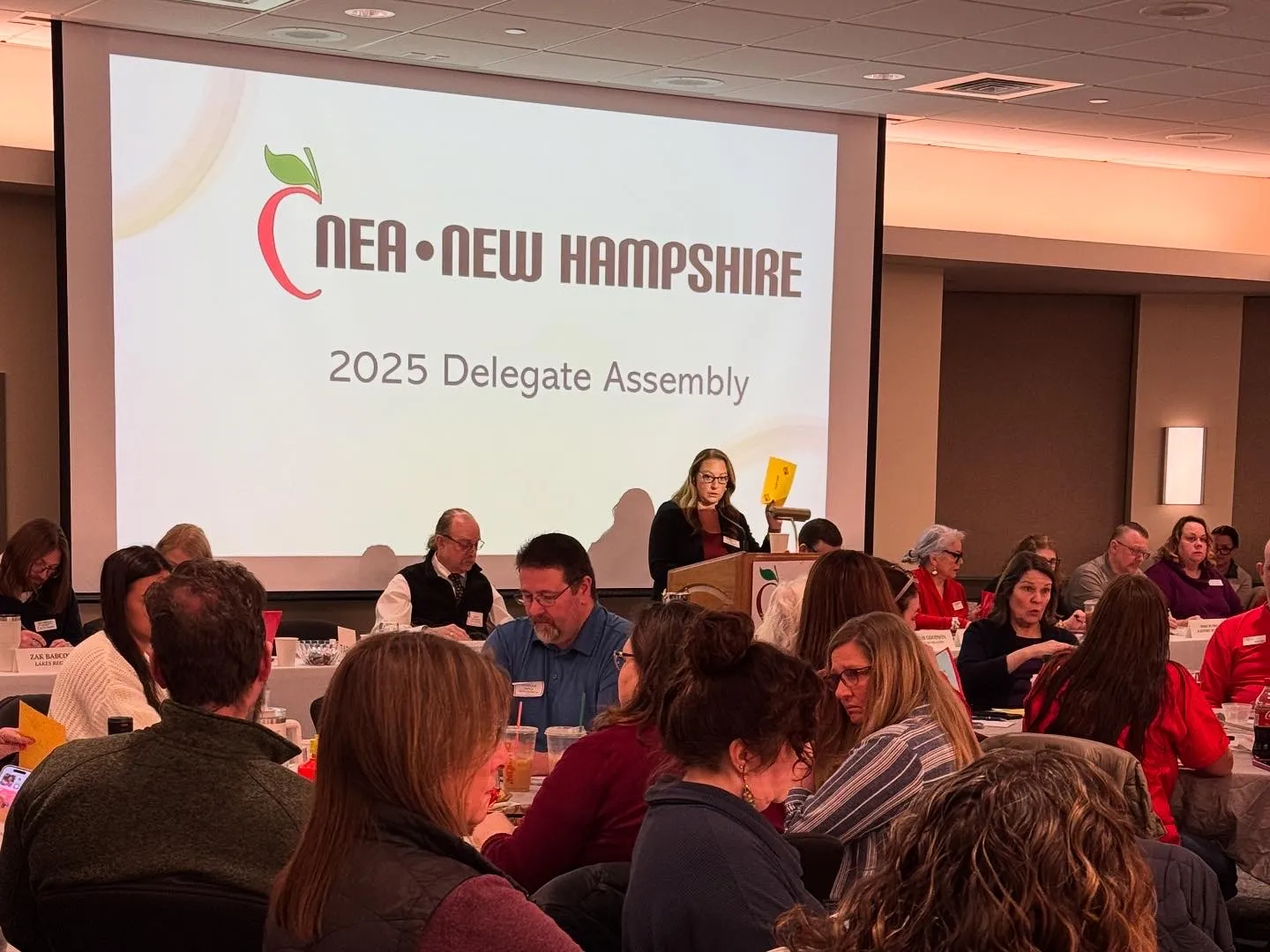As educators, we’ve all seen the shift in schools—students constantly tethered to screens, even during instructional time. New Hampshire’s new bell‑to‑bell cellphone prohibition marks a critical step forward for student learning and well‑being. NEA‑New Hampshire proudly supports this policy because it is grounded in educator experience.
Everyone who has been inside a school in the last decade has seen how cellphones contribute to misbehavior and shortened attention span. I know that when teachers are left to enforce cellphone usage on an individual classroom-to-classroom basis, it disrupts your ability to lead instruction. That’s why we advocated for this policy at the state level - to ensure uniformity across districts and across the state that don’t force educators into the role of cellphone police.
The new law, which was adopted as part of the state budget signed into law by Governor Ayotte, requires all public school districts and charter schools to adopt policies prohibiting use of personal electronic devices—including cellphones, laptops, tablets, smartwatches—from the first bell to the dismissal bell, with only narrowly permitted exceptions for medical, disability, or language‑proficiency needs.
NEA‑NH supported this initiative from the start. Based on our members’ experiences and the results of national surveys showing 90 percent support an instructional‑time ban and 83 percent support a full‑day ban, we made clear: Our goal is that teachers are not cellphone police in classrooms.
Now, we must engage in the work of developing these policies to make that goal a reality. As part of the law, school boards are required to develop policies “in collaboration with school parents and teachers…” You can make your voice heard along with your local union to ensure that the school board is clear that the administration is taking responsibility for its part in upholding and enforcing these policies to best support your fellow educators in your building.
Fortunately, we don’t need to reinvent the wheel. The National Education Association has developed sample cellphone policies for school boards that will serve as a useful template for your community. The key elements of this sample policy include:
- Bell‑to‑Bell Device Prohibition: Students must store personal electronic devices out of sight during the entire school day.
- Uniform Enforcement Protocols: Clear, consistent procedures for first and subsequent violations.
- Protected Student Needs: Specific medical, disability, or language proficiency provisions are embedded so no child is excluded from instruction.
- Collaborative Development: School boards adopt the policy in partnership with teachers, parents, and other stakeholders—an essential step in building both clarity and buy-in.
As we enter the back-to-school season, we hope educators and local unions will share these resources and your perspectives with school board members and administrators as these district-specific policies are written so that the burden of implementation does not fall only on your shoulders.
New Hampshire’s bell‑to‑bell cellphone ban offers a future where educators can teach, students can learn, and school is less about supervising devices and more about inspiring minds. At NEA‑New Hampshire, we are proud to stand behind this policy and committed to helping districts implement it thoughtfully and effectively. Together, with educator voices at the core, we can reclaim school as a space for learning, connection, and growth.
